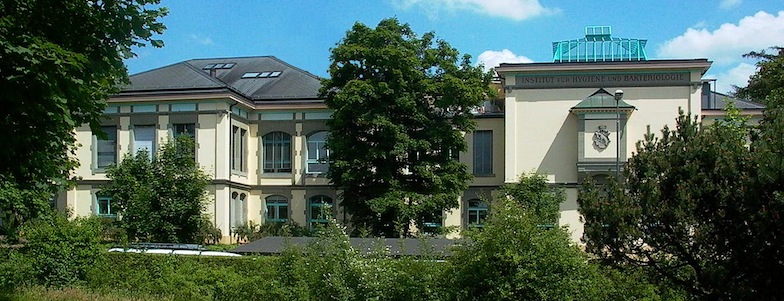Institute for Infectious Diseases (IFID)
Friedbühlstrasse 51

The relocation of Bern University Hospital to Kreuzmatte triggered by the enormous demand for space asserted by government buildings in the city center in the second half of the nineteenth century ranks among Bern's visionary urban development projects. The new location became an important focus that ultimately also drew the university to the Länggass district. From 1884, the first generation of buildings was constructed in rapid succession at Kreuzmatte of which a large share has long been replaced or consolidated, such as Pathology and Dental Medicine. One of the last buildings of the first generation is used by the university – the Institute for Infectious Diseases.
The building was constructed in two stages: the villa-like, symmetrical laboratory building at Friedbühlstrasse 49, a generously proportioned utilitarian construction in the style of historicism probably in 1896, and auditorium building no. 51 in 1908. At least the former originates from Aldred Hodler who a few years later was to win the competition to construct the main building of the university.

The unspectacular and generous roughcast buildings bear structural elements of sandstone. Some details of the auditorium building such as the building address carved in large letters in the frieze on the cornice or the recently restored construction and the projecting roof made of steel and glass exude the atmosphere of their time.
The building was completely renovated between 1997 and 2000 by Sonja and Urs Grandjeaneiner.
Literature:
Barbara Wyss-Iseli (ed.), Canton of Bern Department of Construction, Transport and Energy, Construction Department (ed.), University of Bern, Institute of Medical Microbiology: Gesamterneuerung 1997-2000, Bern 2000
Bernhard Furrer (ed.), Emanuel Fivian et al., "Denkmalpflege in der Stadt Bern 1997-2000", in: Berner Zeitschrift für Geschichte und Hematkunde, 63 (2001), vol. 2+3, p. 52-54 (parts 1 and 2)
